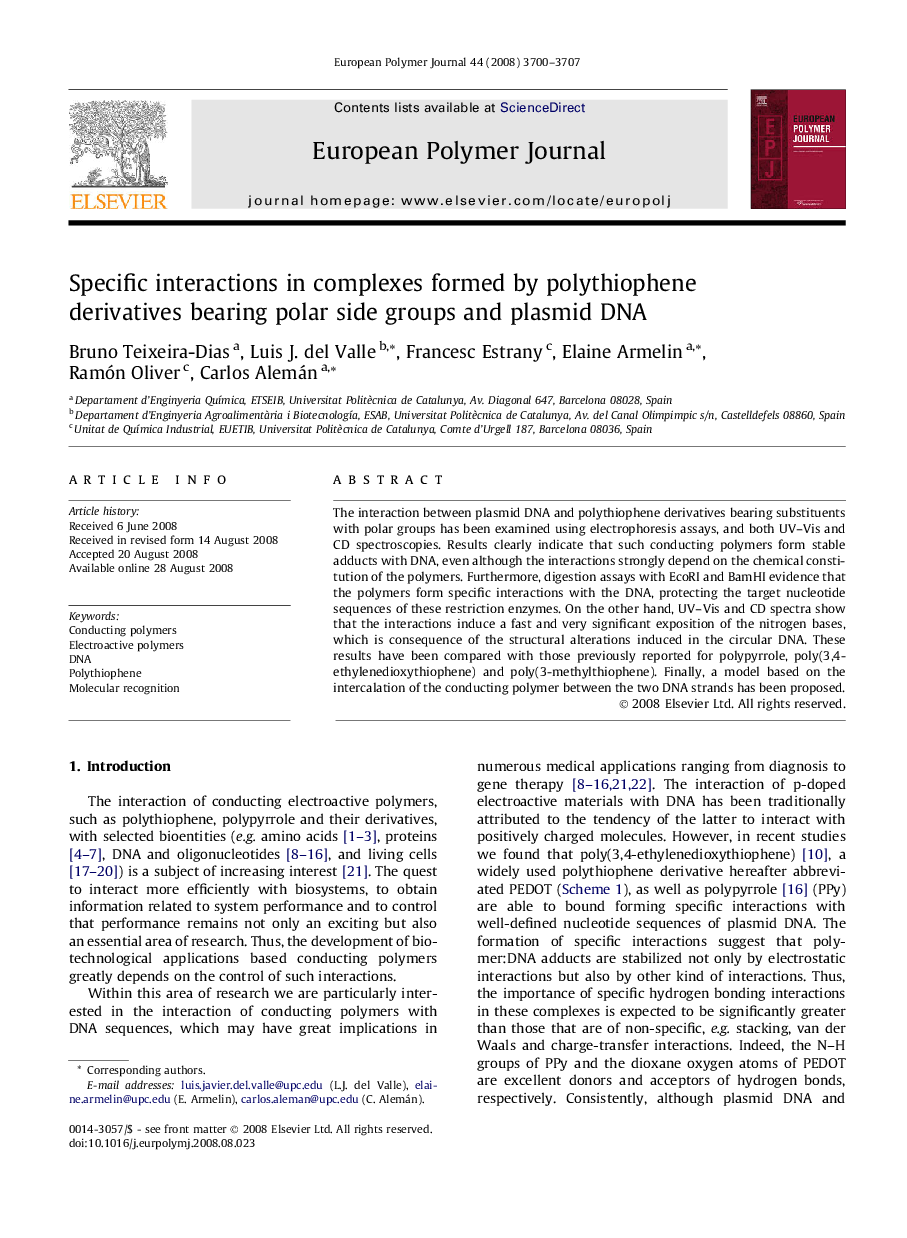| Article ID | Journal | Published Year | Pages | File Type |
|---|---|---|---|---|
| 1400881 | European Polymer Journal | 2008 | 8 Pages |
Abstract
The interaction between plasmid DNA and polythiophene derivatives bearing substituents with polar groups has been examined using electrophoresis assays, and both UV-Vis and CD spectroscopies. Results clearly indicate that such conducting polymers form stable adducts with DNA, even although the interactions strongly depend on the chemical constitution of the polymers. Furthermore, digestion assays with EcoRI and BamHI evidence that the polymers form specific interactions with the DNA, protecting the target nucleotide sequences of these restriction enzymes. On the other hand, UV-Vis and CD spectra show that the interactions induce a fast and very significant exposition of the nitrogen bases, which is consequence of the structural alterations induced in the circular DNA. These results have been compared with those previously reported for polypyrrole, poly(3,4-ethylenedioxythiophene) and poly(3-methylthiophene). Finally, a model based on the intercalation of the conducting polymer between the two DNA strands has been proposed.
Related Topics
Physical Sciences and Engineering
Chemistry
Organic Chemistry
Authors
Bruno Teixeira-Dias, Luis J. del Valle, Francesc Estrany, Elaine Armelin, Ramón Oliver, Carlos Alemán,
